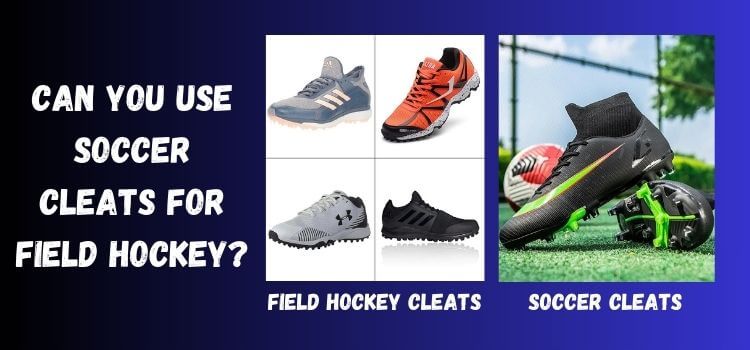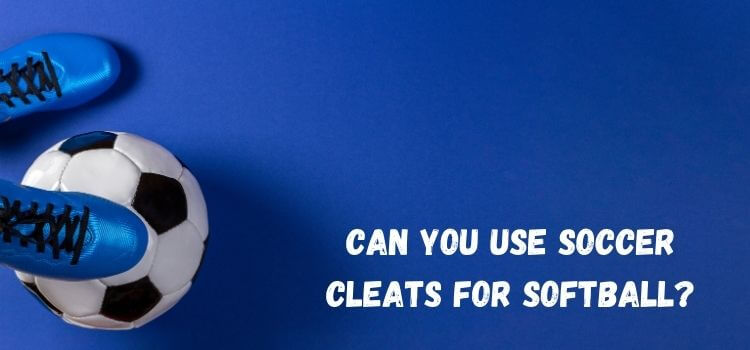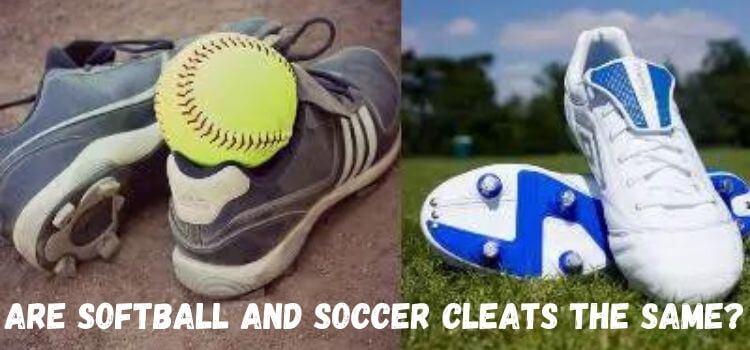As an Amazon Associate, I earn from qualifying purchases
If you’re an avid athlete exploring field hockey, you may wonder, “Can you use soccer cleats for field hockey?”
A common question arises when athletes seek versatility in their sports gear. In this comprehensive guide, we’ll delve into the compatibility of soccer cleats for field hockey, addressing key factors such as traction, design, support, protection, and performance.
Whether you’re a soccer enthusiast curious about transitioning to field hockey or a field hockey player considering alternative footwear, you can make an informed decision after reading this article. Join us as we navigate through the intricacies of these two sports and discover if your trusty soccer cleats can seamlessly translate to success on the hockey pitch.

Introduction to Soccer Cleats and Field Hockey
Football boots or soccer cleats are shoes designed specifically for playing soccer. They typically feature studs or cleats on the sole to provide traction on grass or turf surfaces.
On the other hand, field hockey involves playing with a ball on grass or artificial turf using a hockey stick. Hockey cleats, similar to soccer cleats, are designed to provide traction and stability on the pitch.
Understanding the Differences
Design and Construction
Soccer cleats are often designed with a low-cut profile to allow for freedom of movement and agility. They may have different stud configurations depending on the playing surface, such as firm ground (FG), soft ground (SG), or artificial turf (AG).
While also providing traction, field hockey cleats are designed to focus on lateral movement and quick turns. They may have a higher ankle cut to provide ankle support and protection against stick impacts.
Traction and Grip
Soccer cleats prioritize forward motion and kicking accuracy, with studs positioned to enhance traction during sprinting and sudden stops. In contrast, field hockey cleats emphasize multidirectional movement, with studs strategically placed to support quick changes in direction and pivoting.
Protection and Durability
Field hockey cleats often feature reinforced toe caps and additional padding around the ankles to protect against impact from the ball and opponents’ sticks.
They are also designed to withstand the rigours of the sport, which includes frequent running, stopping, and pivoting on grass or turf surfaces.
Can Soccer Cleats Be Used for Field Hockey?
While it is possible to use soccer cleats for field hockey, there may be better choices than soccer cleats. Soccer cleats need to include some specific features required for hockey, such as higher ankle support and specialized stud configuration. However, some players may find soccer cleats suitable for recreational or casual play.
Pros:
- Availability: Soccer cleats are more widely available and may be more affordable than specialized field hockey cleats.
- Comfort: Players accustomed to soccer cleats may find them comfortable to wear during hockey games.
Cons:
- Lack of Ankle Support: Soccer cleats typically have a lower cut, which may not provide sufficient ankle support for the lateral movements required in hockey.
- Suboptimal Traction: The stud configuration of soccer cleats may not provide the optimal traction and grip for field hockey’s multidirectional movements.
Factors to Consider When Using Soccer Cleats for Field Hockey
Playing Surface
A soccer cleat’s suitability for field hockey can depend on the playing surface. While soccer cleats are designed for grass or turf surfaces, they may not perform as well on the artificial turf commonly used in field hockey’s.
Personal Preference
Some players may prefer the feel and fit of soccer cleats over field hockey cleats. However, personal preference should be balanced with safety and performance considerations on the field.
Budget
Using soccer cleats may be a cost-effective option for players on a tight budget or those who only play hockey recreationally. However, serious players may benefit from investing in specialized field hockey cleats for optimal performance.
Tips for Using
Proper Fit
Ensure the soccer cleats fit snugly and adequately support the feet and ankles. Consider wearing thicker socks for additional cushioning and protection.
Maintenance and Care
Ensure your soccer cleats are regularly cleaned and examined to prevent traction issues. Replace worn-out studs or cleats to maintain optimal grip on the field.
Adaptation Techniques
Practice adapting your playing style to compensate for any limitations of using soccer cleats in field hockey’s. Focus on improving agility, balance, and footwork to maximize performance.
Conclusion
While soccer cleats can technically be used for field hockey, they may provide a different level of performance and protection than specialized ones. Players should consider their playing style, the playing surface, and personal preferences when deciding whether to use soccer cleats for field hockey’s.
Frequently Asked Questions (FAQs)
While soccer cleats are designed for natural grass surfaces, they can be used on artificial turf for field hockey. However, the traction and grip may not be as optimal as with specialized field hockey cleats.
Soccer cleats may not provide sufficient ankle support for the lateral movements involved in hockey, increasing the risk of ankle injuries.
Designers specifically create hockey cleats for the demands of hockey, so they may not perform as well for soccer, particularly in terms of kicking accuracy and forward motion.
It’s essential to regularly inspect your soccer cleats for signs of wear and tear, such as worn-out studs or damaged sole plates. Replacing them can maintain the field’s performance and safety.
Yes, specialized field hockey shoes offer the specific features and traction needed for the sport. Consider investing in a pair for enhanced performance and safety.
Read Our More Articles
- What Is the Difference Between Soccer and Softball Cleats?
- Do Pro Soccer Players Wear Metal Cleats? An In-Depth Look
- Are Metal Cleats Allowed in Soccer? The Ultimate Guide
As an Amazon Associate, I earn from qualifying purchases


